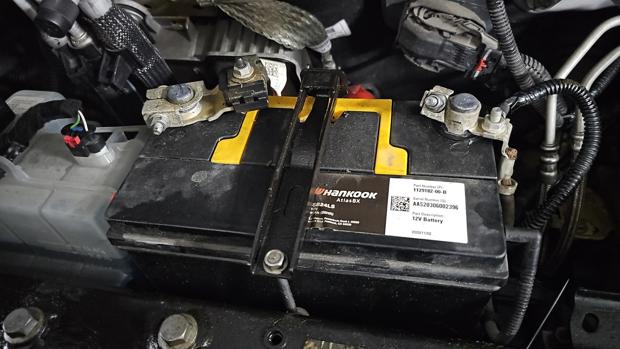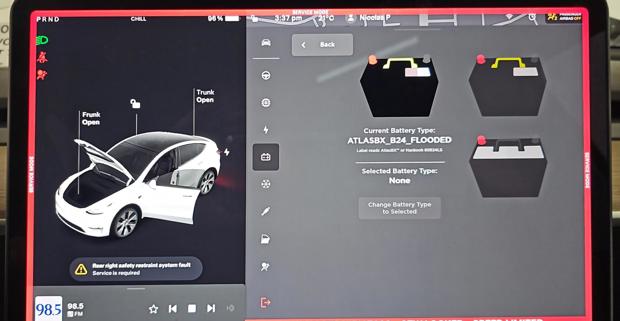Tesla Model 3 12-Volt Auxiliary Battery Function
Like a conventional car, an electric vehicle relies on a 12V battery to power its accessories. If the electric vehicle needs to draw power from it, the 12V battery is already charged, but the big difference is that there is no alternator, only a converter. The important point to consider is that if the 12V battery doesn't work, your electric vehicle will not start, and you will be stranded, as you would be in a vehicle with an internal combustion engine.
Maintenance of the Tesla Model 3 12-Volt Auxiliary Battery
Here are a few things to consider for maintenance on the Tesla Model 3 12V battery:
Model 3 is Equipped With Two Battery Technologies
- A lead-acid battery until late 2021: the same battery as in vehicles with an internal combustion engine.
- A lithium-ion battery starting in late 2021 and recent models built in Shanghai or Fremont. This battery should last longer than a lead-acid battery, but the cost is much higher.
Voltage Monitoring
Keep an eye on 12V battery voltage levels via the car’s display. Tesla vehicles generally provide information on the health and status of various components, including the 12V battery.
Regular Checks
Although the 12V battery in electric vehicles is under less strain than the main high-voltage battery, it is still important to check it regularly for signs of corrosion or loose connections. Make sure all connections are secure and free from corrosion. Any white deposits are a sign of trouble, and your NexDrive centre will carry out thorough tests to confirm battery health.
Factors Affecting 12-Volt Battery Life
Extreme temperatures, whether hot or cold, can affect battery performance. If you live in a region with harsh weather conditions, take extra precautions to monitor and, if necessary, replace the 12V battery at the first sign of failure.
Replacing the 12-Volt Lead-Acid Battery
Like any automotive battery, the Tesla Model 3 12V battery may need replacing after a certain time. Although the expected life cycle may vary, it is advisable to follow Tesla’s recommendations, if specified.
In a Tesla Model 3, the 12V battery is located at the rear of the front trunk. Replacing it requires more steps than a conventional vehicle, including disconnecting the first response loop, as recommended by Tesla, and disconnecting the low-voltage port at the rear of the car. In addition, the car must be powered down using the vehicle settings so that the battery can be replaced.
We recommend that you have the battery replaced by a NexDrive centre, where they will also check the ports and charging system to avoid error codes. The ports are fragile, and breaking one of them could leave you stranded.
If your vehicle is fitted with a lithium-ion battery, it’s essential to have the entire system checked before replacing the battery, as this is a costly item.
Always consult the Tesla Model 3 owner’s manual and follow manufacturer maintenance guidelines to ensure the longevity and optimum performance of the 12V battery. If you have any concerns or problems, you may contact one of our NexDrive experts for advice and information on replacing your battery.












